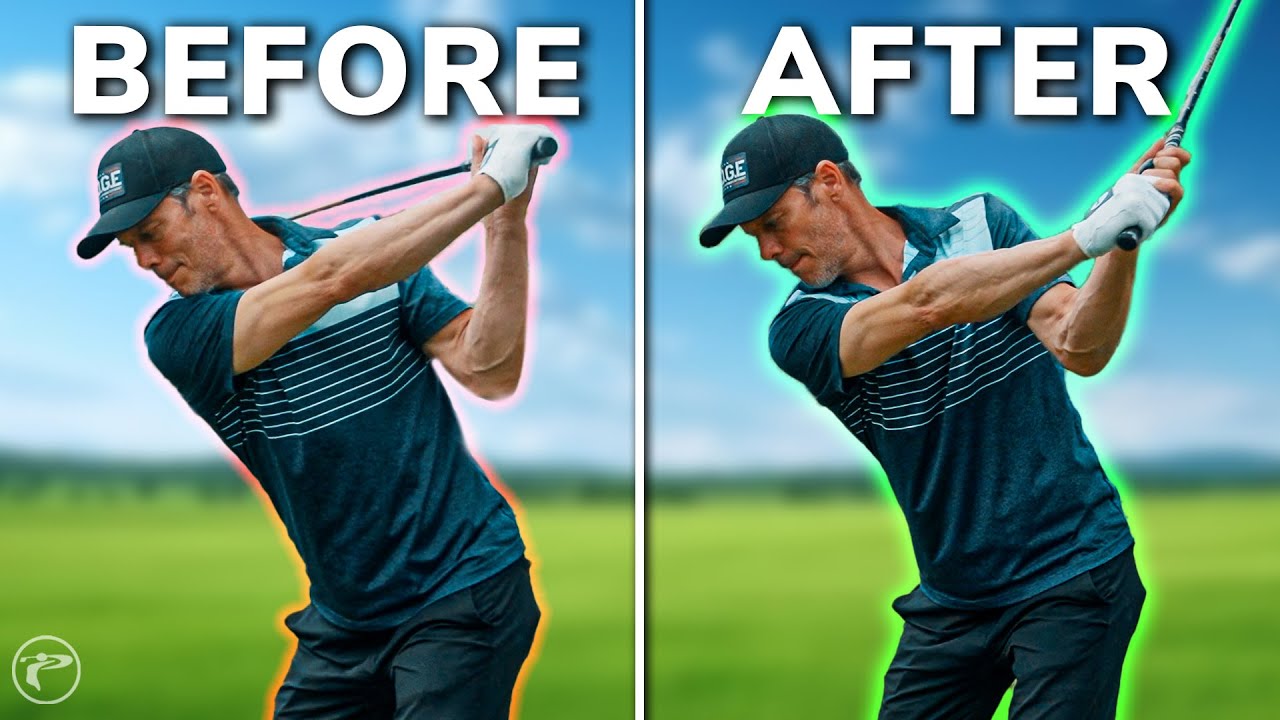
Unlock the secrets of a compact golf backswing for improved precision and power. Enhance your control, achieve consistent shots, and elevate your game strategy.
Why a Compact Backswing Outshines a Long Backswing
Golfers often ponder whether a longer backswing equals better shots. Contrary to common belief, the key to mastery lies not in the swing’s length but in its control and connection. In this guide, learn why adopting a compact backswing promotes a fluid release, superior tempo, and dependable ball striking.
Why Choosing Compact Over Long Works
Some golfers might find generic terms like ‘backswing’ complicated. A longer backswing might increase potential energy, but more often than not, it leads to a loss of control and precision. When you swing too far back, you may struggle with coordination between your body, arms, and the club, resulting in erratic shots.
“When the body’s done turning, you’ve gotta feel like this is done swinging.”
Identifying Problems with an Overly Long Backswing
A common issue with a long backswing is the “loose at the top” sensation. When the club dangles away from its optimal position, your hands have to catch up, impairing timing and impacting release quality. Reduced control at this point makes the swing unreliable.
- Your body might stop turning too soon, creating a gap between your body movement and the club.
- The club folds excessively at the top, compromising stability.
- Your hands and arms may work overtime trying to align with the club during the downswing.
- Your release lacks consistency, relying on wrist strength instead of the full body’s rotation.
How to Achieve a Compact, Connected Backswing
Creating a reliable backswing begins at the ground level. It’s vital to achieve a seamless motion where all body parts synchronize. Here’s a focused approach for developing reliable swing:
- Start with your body’s full rotation. Engage hips and shoulders before arms participate.
- Attain a solid “set” position at the top. Ensure the club is hinged and aligned correctly.
- Maintain a unified motion. As you complete the turn, synchronize the movement of your arms and hands.
- Eschew unnecessary motions. Stabilize the club at the top so it feels ready for the downswing.
To practice this, use a “stop and go” drill—pause at your swing’s top and initiate your downswing without haste, honing your ability to release the club accurately.
Essential Drills for a Compact Backswing
The Set Position Drill
This drill perfects your swing’s top position:
- Begin with an 8-iron or similar.
- Make a backswing, focusing on your body’s full rotation.
- Pausing at the top, check for proper club alignment.
- Focus on the connection between your body parts.
- Initiate your downswing without losing that connection.
The Pause-and-Go Drill
This drill refines your release technique:
- Begin your backswing as usual.
- Pause briefly at the top, solidifying the club’s position.
- Launch your downswing slowly, entrusting body movements to guide the club.
- Increase swing speed while maintaining synchronization.
Enhance Your Swing with Rhythm and Tempo
Your swing’s tempo and rhythm unify it. To perfect it, practice moving more slowly at first. As you build comfort, speed can increase, but rhythm should remain natural and fluid. It’s not about muscle power; effective movement coordination generates power and accuracy.
The Advantages of a Compact Swing
Applying a compact backswing offers numerous benefits:
- Consistency: Achieve repeatable precision at the swing’s base.
- Reduced timing dependence: Minimize need to compensate for the club’s position.
- Enhanced control: Attain predictable, straighter shots.
- Natural tempo: Swing with fluidity, reducing stress and exertion.
- Confidence boost: Handling a repeatable swing boosts course confidence.
Executing the Perfect Swing Sequence
Simplifying your golf swing into crucial steps turns into game improvements:
- Initiate with full body rotation: Use hips and shoulders to create energy.
- Set the club upwards: Keep it stable without undesirable rolling.
- Briefly pause: Feel synchronized before delving into downswing.
- Engage your use body: Move hips toward the target, allowing arms to accompany.
- Retain a calm rhythm: Achieve smooth strike by letting body motion proceed.
- End with composed follow-through: Ensure natural momentum drives the club towards the target.
Frequently Asked Questions (FAQ)
Q: Is a huge backswing necessary for distance?
A: Not at all. A compact swing with solid rotation can yield powerful shots without control loss.
Q: How can I identify if my backswing is excessive?
A: Pay attention if the club feels loose at the top or if you struggle with swing timing.
Q: What defines a “set” position at the swing’s top?
A: Establish wrist hinges for as stable, upward-pointing clubface, promoting a smooth downswing.
Q: Are these drills inclusive for all players?
A: Certainly. Every golfer can gain from drills emphasizing consistent release and compact backswing.
Q: What role do rhythm and tempo play in swinging a golf club?
A: They ensure seamless operation. Without them, even the best swings feel disjointed.
Q: How long to develop a compact swing?
A: Improvement varies, but regular drills will yield results over weeks. Patience and practice pay off.
Conclusion: Swing Smart, Consistently
Understanding the significance of a compact backswing sharpens your game. Focusing on body rotation and minimizing unnecessary motions allows better control and a reliable release. Implement our suggested drills for lasting improvement, achieving smoother tempo, and confident play. Remember, it’s the fundamentals that count the most.


0 Comments